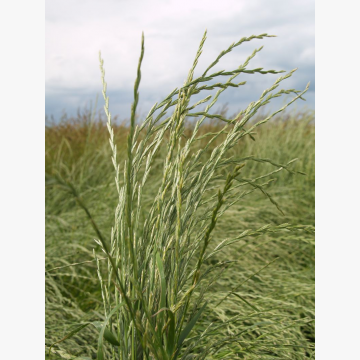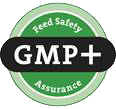- Home
- Seeds
- Fodder grasses and legumes
- FORAGE GRASSES
- Festulolium FESTILO
FOR CONSULTATIONS APPLY TO:
Commercial director
Lina Smalskienė
tel. +370 618 02 551
e-mail linak@agrolitpa.lt
Sales manager
Tautvydas Kliučininkas
tel. +370 681 35 093
e-mail tautvydask@agrolitpa.lt
Sales manager
Eglė Petkevičienė
tel. +370 626 95 458
e-mail eglep@agrolitpa.lt
Sales manager
Kotryna Nakrošytė
tel.: +370 601 39 282
e-mail kotryna@agrolitpa.lt
Festulolium FESTILO
A productive tetraploid festulolium for feed preparation
- Growth type is more like Italian ryegrass than of Meadow fescue
- High dry matter yield
- Good digestibility
- Good seed yield
- Resistance to rust and leaf spots
In order to combine the favourable properties of perennial (English) ryegrass /Italian ryegrass (Lolium) and those of tall fescue/meadow fescue (Festuca) in one variety, these two species were crossed. Depending on the cross-breeding components, the characteristics of perennial (English) ryegrass /Italian ryegrass (forage quality, digestibility) and tall fescue/meadow fescue (resistance to drought, cold) prevail in the created Festulolium variety.
- It is a hybrid of Hybrid ryegrass (Italian ryegrass x perennial (English) ryegrass) and meadow fescue
- Growth type is more like Italian ryegrass than Meadow fescue
- High yield of dry mass
- High dry matter yields for both spring and autumn sowing
- Very low number of inflorescences in the year of sowing
- Good digestibility of grass
- Good seed yield
- Good resistance to rust and leaf diseases
- Can be grown alone or in mixtures
- For cutting
- Green mass yield – 44.73 t/ha
- Dry matter content – 19.39 %
- Dry mass yield - 8.675 t/ha
- Protein content – 14.58 %
- Protein yield – 1.265 t/ha
- Digestibility (VEM/kg DM) – 892.80
*Source: Offizielle Sortenversuche Futtergräser. Essais officiels graminées fourragères 2020 data. Sown in 2017, harvest estimated in 2020)
- Green mass yield – 53.32 t/ha
- Dry matter content – 17.91 %
- Dry mass yield - 9.547 t/ha
- Protein content – 14.74 %
- Protein yield – 1.407 t/ha
- Digestibility (VEM/kg DM) – 912.26
*Source: Offizielle Sortenversuche Futtergräser. Essais officiels graminées fourragères 2020 data. Sown in 2017, harvest estimated in 2018-2020)
In 2015-2016:
- Dry mass yield – 1.62 kg/m2 per year
- Digestibility of organic matter – 78.6 %
- Carbohydrate content in dry matter – 16.4 %
- NDFD – 71.1 %
*Source: BAERT J., LAERE K. VAN, WAES C. VAN, GHESQUIERE A., APER J. Breeding and genetics of two new amphiploid Festulolium synthetics with improved yield and digestibility. BIOLOGIA PLANTARUM 64: 789-797, 2020. 789. DOI: 10.32615/bp.2020.138
In dry year 2019:
- Dry mass yield – 1.46 kg/m2 per year
- Digestibility of organic matter – 78.7 %
- Carbohydrate content in dry matter – 13.6 %
- NDFD – 77.4 %
*Source: BAERT J., LAERE K. VAN, WAES C. VAN, GHESQUIERE A., APER J. Breeding and genetics of two new amphiploid Festulolium synthetics with improved yield and digestibility. BIOLOGIA PLANTARUM 64: 789-797, 2020. 789. DOI: 10.32615/bp.2020.138
The varietal parameters may differ from those indicated here when the testing circumstances differ from quondam
Recommended sowing rate: 18 kg/ha
Keravos sreet. 17, Kerava,
LT-38 131 Panevėžys district, LITHUANIA
Enterprise's code 168598128
VAT code LT685981219
Tel. +370 615 11 315
E. mail info@agrolitpa.lt




.JPG)


